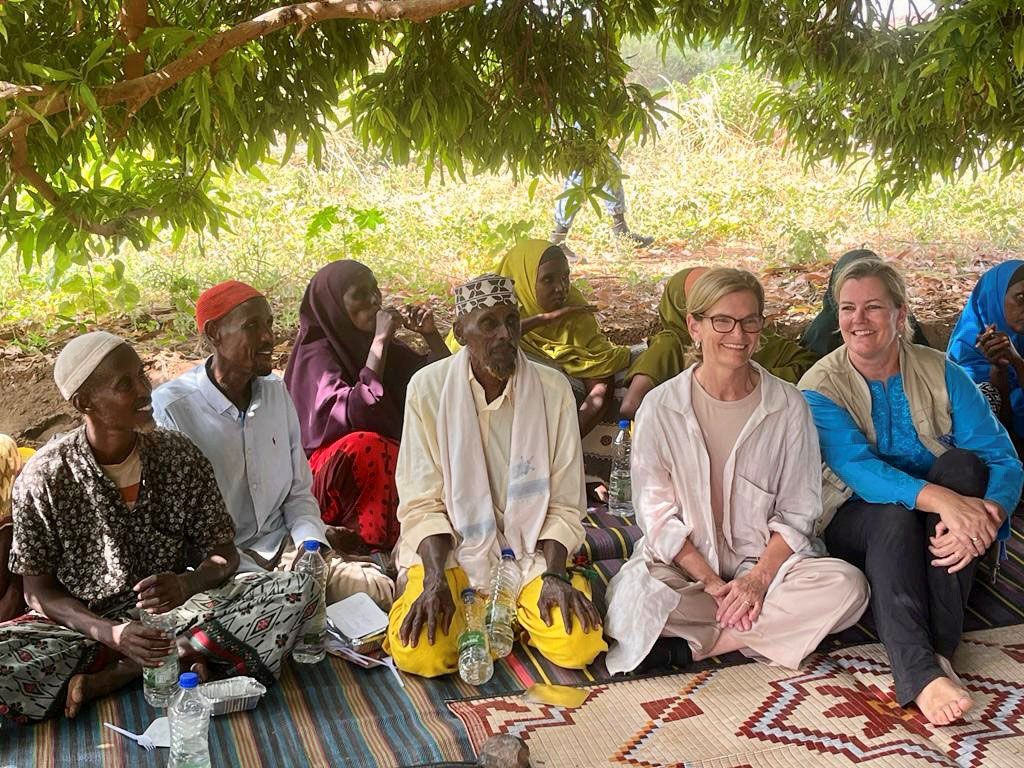
ITU Secretary-General: My plea for refugee connectivity
By Doreen Bogdan-Martin, Secretary-General, ITU
In times of crisis, digital connectivity is vital, providing a lifeline for people to reach emergency services and connect with family and friends. While much of the world takes connectivity for granted, one-third of humanity has yet to be connected.
In today’s fast-evolving digital world, too many forcibly displaced people are being left behind, with limited access to mobile phones and the Internet.
More than 110 million people have been forced to flee their homes in countries rocked by conflict, persecution, and hunger – with 2023 showing the largest ever single-year increase, according to the latest statistics from the UN Refugee Agency (UNHCR). Forty per cent are children under 18 years of age.
With climate change having a multiplier effect, the total number of people uprooted from their homes or made stateless is expected to reach 130 million by the end of 2024. The refugee agency estimates that 80 per cent of those displaced by climate change are women.
These vulnerable communities need access to communications to help connect with basic life-saving services, to continue their education path, and to access resources that can help rebuild their lives.
This is a priority issue for United Nations agencies, including UNHCR and the International Telecommunication Union (ITU), which have joined forces to bring refugees and host communities online through the Connectivity for Refugees Initiative.
Digital inclusion for hosting areas
Earlier this year, with UNHCR Deputy High Commissioner Kelly Clements, I visited the Melkadida refugee camp in Eastern Ethiopia on the border to Somalia. During that joint visit, I was reminded of the vital role that connectivity can have in linking displaced people to families, friends, and life-saving support networks.
To help these communities, our agencies have teamed up with mobile telecom industry association GSMA, the Government of Luxembourg, and other partners. Together, we aim to mobilize investments and policy commitments to ensure digital inclusion for 20 million of the world’s forcibly displaced people and their local host communities.
The Connectivity for Refugees Initiative is calling for expertise, resources, and investment to ensure affordable connectivity in all major refugee hosting areas by 2030. Refugee connectivity also needs to be considered in national digital access plans.
Opportunities for displaced communities
Through ITU’s Partner2Connect Digital Coalition, an initiative aimed at fostering meaningful connectivity and digital transformation, we have mobilized over 830 pledges worth close to USD 37 billion today. Looking ahead, we have issued a worldwide call for USD 100 billion in pledges by 2026.
Through public-private cooperation, we aim to mobilize the expertise, resources, and investment for projects to reach those in the hardest-to-connect communities. This includes helping forcibly displaced people.
The Partner2Connect Annual Meeting on 12 December in Geneva, Switzerland, put a spotlight on the Connectivity for Refugees initiative, with more partners already committed to making contributions.
ITU is also taking part in the Global Refugee Forum on 13-15 December – the world’s largest international gathering on refugees, hosted in Geneva by UNHCR. This is another moment to mobilize support, as we accelerate our drive to build opportunities for connectivity in refugee communities.
Meaningful connectivity for all
I believe we must work together to find ways to connect the many forcibly displaced people who are still digitally excluded.
Internet access can bring benefits on a broad scale, and innovative approaches from service providers can help refugee communities.
Information technology databases can help with providing identification for refugees and displaced people, reconnecting family members, and planning for the provision of essential services like health care, as well as ensure those on the move have access to education.
AI-powered language translation tools can improve delivery of information. Geographic information systems and big data can play a valuable role in understanding where refugees and displaced people are located, so that aid quickly gets to where it is most needed.
Displaced people, including refugees, and the communities that host them, should have the right, and the choice, to be included in a connected society. They, too, must be able to leverage the benefits and opportunities of digital technologies, to build better futures for themselves and their families.
I call on everyone who understands the urgency of this challenge to join us in making digital inclusion and meaningful connectivity a reality for those who have been forced to flee.
Only through meaningful connectivity can every person, every community, and every society be positively transformed through the use of today’s powerful digital technologies.

Header image credit: UNHCR
